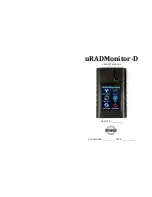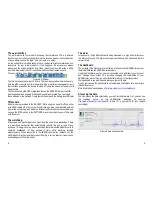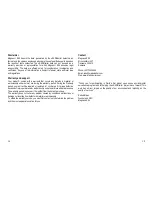
Troubleshooting
Here are a few hints on fixing various issues when using your Model D dosimeter.
For additional help resources use the uRADMonitor forum on
www.uradmonitor.com/forum or contact us.
1.My unit doesn't start
If the battery is depleted, your unit won't start. Connect a standard USB charger,
via the USB port, and check the RED battery LED turning on. When charging is
complete, the GREEN led will turn on.
2.The unit is not visible online, nor can I access it via LAN
Make sure you've successfully configured the WIFI settings for your unit. Open
your router's admin page and check that a valid IP was allocated via DHCP. Try
pinging the IP to make sure the connection is properly setup. Check the network
and your router.
Frequently asked questions
Is my model D being calibrated?
Each uRADMonitor-D meter is subjected to a final test. The tested device must be
in a confidence interval of 5% in comparison to a master.
Can I use it outdoors?
Yes, but only taking precautions not to expose it to rain or sun. The device, like
other electronics, is sensitive to the elements, and reasonable care must be taken
to protect it.
Can I remove the SDCARD?
Yes, you can remove the card, read it on your computer, or replace it with a
different card, as long as it is formatted as FAT32, it will be recognized by the
Model D.
What is the privacy policy if the unit sends data online?
We retain no personal information associated with your unit's data online, and the
location on the map can be customized for better accuracy or better privacy,
according to your requirements. You have access to these coordinates yourself, by
using the Dashboard, on
http://www.uradmonitor.com/dashboard
. Additionally you
can opt to mark your unit as private.
What is a microsievert?
In physics, three types of radioactive radiation are known: alpha, beta and gamma
radiation. They differ, not only in their physical characteristics, but also in their
effects on humans. To make these three radiation types comparable in their effects
on humans, a value has been created which defines the biological effects of
radiation: it is referred to as dose equivalent whose unit is the sievert (called
equivalent dose). Based on the counted radiation pulses, the different components
of a radiation mix are converted into a common measure for the biological effect.
Air quality index worldwide thresholds
You can read more on international pollutants legal limits by visiting
https://en.wikipedia.org/wiki/Air_quality_index
12
13









